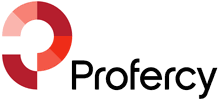Potash is a term commonly used to refer to potassium-containing fertilizers. Potassium (K) is one of the three primary nutrients essential for plant growth, alongside nitrogen (N) and phosphorus (P). The term ‘Potash’ comes from an early production technique where wood and other organic materials would be burnt, the ashes were then leached in large pots with water. Through this process, soluble potassium compounds would dissolve in the water, forming a concentrated solution. This solution would then be evaporated, leaving behind potassium-rich residues, which were commonly referred to as “pot-ashes.” Over time, this term evolved into “potash.” This practice is no longer practical and is not environmentally sustainable.
Now, Potash is a general term used to describe a variety of Potassium (K) containing fertilizers used in agriculture. Essential for plant health, potassium must be in adequate supply in the soil to maintain good growth. When the potassium supply is limited, plants have reduced yields, poor quality, utilize water less efficiently, and are more susceptible to pest and disease damage. In food production, potassium is removed from the soil in harvested crops and must be replaced in order to maintain future crop growth.
There are many sources of potassium that can be used to sustain a productive and healthy ecosystem and replenish the soil’s nutrient reserve, including Potassium chloride (KCI), which is often referred to as Muriate of potash or MOP, Potassium sulphate (SOP), and Potassium nitrate (NOP). Potassium chloride (KCl) or MOP, is the most commonly used source of K.
Potassium is present in all these fertilizers and this nutrient will be rapidly available to the plant regardless of the type used. The primary difference is in the companion nutrients.
Potassium Chloride/ MOP: Potassium chloride is usually the least expensive source of potash. It’s a crystalline salt that contains potassium and chlorine, with the chemical formula KCl. The importance of chloride is frequently overlooked, but it is an essential nutrient for plant growth. The chloride component of MOP can however be detrimental to certain crops, particularly those sensitive to high chloride levels, such as tobacco, fruits, and vegetables like potatoes. In such cases, potassium sulphate (SOP) or other chloride-free potassium fertilizers may be preferred.
Potassium Sulphate (SOP): All crops require an adequate supply of sulphur to develop proteins and enzymes. SOP is preferred for certain crops, particularly those sensitive to chloride, such as fruits, vegetables, and tobacco. Sulphate that is present in potash fertilizers is immediately available for plant uptake.
Potassium Nitrate (NOP): NOP is a versatile fertilizer used in agriculture to supply both potassium and nitrogen, two essential nutrients for plant growth and high-yielding crops. For crops that prefer a nitrate source to an ammonium source of nitrogen, this potash source can be a good option.
The traded supply of global potash of dominated by three countries who typically provide two thirds of the world’s supply of MOP; Belarus, Canada and Russia. Other sources of potash supply include China, Jordan, Israel, Germany, Chile, Laos and Spain.
